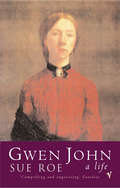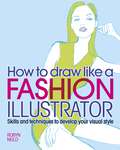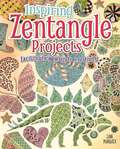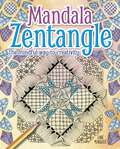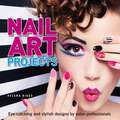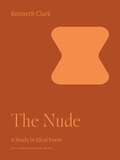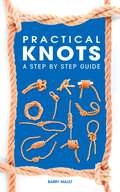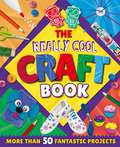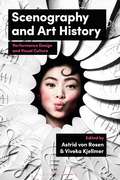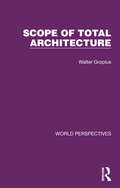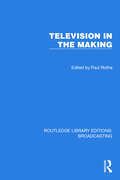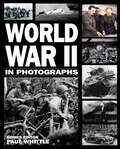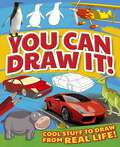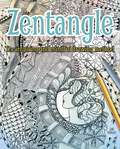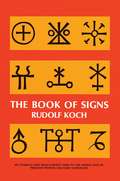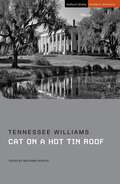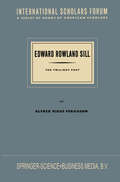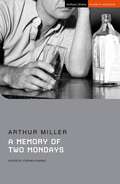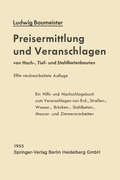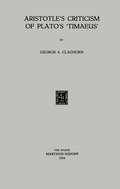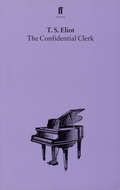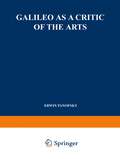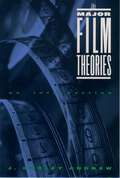- Table View
- List View
Gwen John
by Sue RoeIn 1942, at the height of his fame, Augustus John predicted that 'fifty years from now I shall be known as the brother of Gwen John'. Gwen John (1876 - 1939) is indeed now recognised as a great artistic innovator, yet for years her life remained shrouded in the myth of the solitary recluse. Born in Pembrokeshire, Gwen followed her brother to the Slade. Her future was bound up with Augustus, his women and his coteries, yet she was also daring and highly original, living determinedly in her own way. Defiant yet shy, she painted and modelled amid the Bohemian circles of early twentieth-century Paris and embarked on a long, intense love affair with France's most legendary artistic figure, the sculptor Rodin. A friend of Symbolist poets and post-Impressionist painters, later she turned increasingly to religion, achieving a deep serenity which masked her inner turbulence, creating her haunting paintings - delicate, austere, restrained and still. Based on her lively and passionate unpublished letters and copiously illustrated, this vivid new biography challenges our prejudices about the ways we evaluate women artists and finally uncovers the life of this ardent and complicated personality, one of the finest artists of her day.Important Notice: The digital edition of this book is missing some of the images or content found in the physical edition.
How to Draw Like a Fashion Illustrator: Skills and techniques to develop your visual style
by Robyn NeildThis step-by-step guide provides an insight into how to illustrate fashion designs and get your ideas down on paper. It is of interest to any designer, from the complete beginner or someone hoping to improve their skills and establish a career as a fashion illustrator, to professionals wanting to strengthen their visual impact. Using inspiration from past artists and illustrators, readers will learn how to adopt new and different ways of drawing.
Inspiring Zentangle Projects: Exciting new ways to creativity
by Jane MarbaixZentangle is an accessible and creative artform that is immensely popular around the world. In this innovative book, certified Zentangle teacher Jane Marbaix presents a range of projects designed to free up creativity and improve tangling skills.
Mandala Zentangle: The Mindful Way to Creativity
by Jane MarbaixZentangle is the drawing art form taking the world by storm. Easy to do and immensely enjoyable, the Zentangle method can make artists of us all. To create artworks the Zentangle way, you need no drawing skills. The steps are easily taught in a few simple lessons In this follow up to her first book, the immensely successful Zentangle, Certified Zentangle Teacher Jane Marbaix explores the artistic possibilities of Zendalas and shows how beautiful and rewarding artworks can be created from the cosmic forms inherent in mandalas. The mandala-like imagery emphasizes the meditative and therapeutic nature of the Zentangle method.
Nail Art Projects: Eye-catching and stylish designs by salon professionals
by Helena BiggsThis book includes beautifully photographed nail projects and step-by-step instructions for over 20 unique designs. Additionally, there are extra nail art tips and tricks from prominent nail art technicians to help you achieve flawless execution of all the projects. A beginner to a professional manicurist can use this book as a source of inspiration and a guide to modern nail art techniques.
The Nude: A Study in Ideal Form (The A. W. Mellon Lectures in the Fine Arts #2)
by Kenneth ClarkA landmark study of the nude in art—from the ancient Greeks to Henry Moore—by a towering figure in art historyIn this classic book, Kenneth Clark, one of the most eminent art historians of the twentieth century, examines the ever-changing fashion in what constitutes the ideal nude as a basis of humanist form, from the art of the ancient Greeks to that of Renoir, Matisse, and Henry Moore. The Nude reveals the sensitivity of aesthetic theory to fashion, what distinguishes the naked from the nude, and just why the nude has played such an important role in art history. As Clark writes, “The nude gains its enduring value from the fact that it reconciles several contrary states. It takes the most sensual and immediately interesting object, the human body, and puts it out of reach of time and desire; it takes the most purely rational concept of which man is capable, mathematical order, and makes it a delight to the senses; and it takes the vague fears of the unknown and sweetens them by showing that the gods are like men and may be worshipped for their life-giving beauty rather than their death-dealing powers.”Please note: All images in this ebook are presented in black and white and have been reduced in size.
Practical Knots: A Step-by-step Guide
by Barry MaultA knot book aimed at the everyday user of knots, bends and shanks around the home and outdoors. Instead of presenting a bewildering array of knots which are of no consequence in real life, this book shows you, step by step in photographic sequence, how to tie knots, and then how they can be used for a number of practical tasks.
The Really Cool Craft Book: More Than 50 Fantastic Projects
by Annalees LimThis book is jam-packed with brilliant craft ideas, gift suggestions and fun projects that kids aged 7 and above can make straight away. So, grab some glue, dig out some beads or fabric... and get crafting! Easy-to-follow instructions and clear photographs are provided for every project, but experimentation and customization are positively encouraged. The book's tone is fun yet informative and its design style draws inspiration from scrapbooks.
Scenography and Art History: Performance Design and Visual Culture
by Astrid von Rosen and Viveka KjellmerScenography and Art History reimagines scenography as a critical concept for art history, and is the first book to demonstrate the importance and usefulness of this concept for art historians and scholars in related fields. It provides a vital evaluation of the contemporary importance of scenography as a critical tool for art historians and scholars from related branches of study addressing phenomena such as witchy designs, Early Modern festival books, live rock performances, digital fashion photography, and outdoor dance interventions. With its nuanced and detailed case studies, this book is an innovative contribution to ongoing debates within art history and visual studies concerning multisensory events. It extends the existing literature by demonstrating the importance of a reimagined scenography concept for comprehending historical and contemporary art histories and visual cultures more broadly. The book contends that scenography is no longer restricted to the traditional space of the theatre, but has become an important concept for approaching art historical and contemporary objects and events. It explores scenography not solely as a critical approach and theoretical concept, but also as an important practice linked with unrecognized labour and broader political, social and gendered issues in a great variety of contexts, such as festive culture, sacred settings, fashion, film, or performing arts. Designed as a key resource for students, teachers and researchers in art history, visual studies, and related subjects, the book, through its cross-disciplinary frame, does consider, implicitly and explicitly, the roles of both scenography and art in society.
Scope of Total Architecture (World Perspectives #5)
by Walter GropiusOriginally published in 1956, this book provides a non-technical analysis of contemporary building by on the of the world’s greatest architects. Published a few years after the end of WW2, it was an inspiring and constructive picture of what kind of living could lie ahead for Western industrial society. This book, the result of many year in the forefront of architectural experiment and achievement by the author, outlines in practical terms the road to improved existence through science, mass production in building and renewed emphasis on the individual.
Scope of Total Architecture (World Perspectives #5)
by Walter GropiusOriginally published in 1956, this book provides a non-technical analysis of contemporary building by on the of the world’s greatest architects. Published a few years after the end of WW2, it was an inspiring and constructive picture of what kind of living could lie ahead for Western industrial society. This book, the result of many year in the forefront of architectural experiment and achievement by the author, outlines in practical terms the road to improved existence through science, mass production in building and renewed emphasis on the individual.
Television in the Making (Routledge Library Editions: Broadcasting #37)
by Paul RothaTelevision in the Making (1956) looks at television in its infancy, with essays by the leaders of the medium at the time, people who were forging new paths as they imagined and actioned the possibilities of television.
Television in the Making (Routledge Library Editions: Broadcasting #37)
Television in the Making (1956) looks at television in its infancy, with essays by the leaders of the medium at the time, people who were forging new paths as they imagined and actioned the possibilities of television.
World War II in Photographs
by Andrew WebbWorld War II in Photographs is an innovative visual account of the major events of the greatest conflict of the twentieth century, the Second World War. Featuring over 250 original images of warfare in all its forms, the book portrays the significant actions and people of the years 1939-1945. From Dunkirk to D-Day, Churchill to Crete, Rommel to Russia, every aspect of the conflict is examined in astonishing visual detail.
You Can Draw It!: Cool Stuff To Draw From Real Life!
by Trevor Cook Lisa MilesLearn how to draw anything and everything with this fun step-by-step guide. Start by looking at a photo and then bring it to life on the page in quick, easy-to-follow steps. It's packed with loads of fun subjects including Farm Animals, Vehicles, Dinosaurs, Fantasy Figures, and Sea Creatures. Once you've mastered the technique, you'll be able to draw anything! Ready to create some cool cartoons of your own? Then grab a pencil and let's get started!
Zentangle: The inspiring and mindful drawing method
by Jane MarbaixAimed at beginners, this book shows how beautiful images can be created from repeating patterns. Accredited Zentangle teacher Jane Marbaix demonstrates a range of patterns one step at a time and offers a sourcebook of her own designs to inspire tanglers to try something different. Proven to reduce stress and enhance creativity in people of all ages, Zentangle does not require a background in practical art or expensive materials to produce pleasing results.
The Book of Signs
by Rudolf KochThis unusual collection of primitive and medieval symbols provides one of the most fertile single sources of decorative ideas available today. It is also a graphic history of the development of written communication and offers a singular insight into the psychology of the primitive mind. The Book of Signs contains 493 classified and documented illustrations, collected, drawn, and explained by the celebrated typographer Rudolf Koch. Divided into 14 different categories, it includes General Signs, The Cross, Monogram of Christ, Other Christian Signs, Monograms of Medieval Church and State Leaders, Stone Masons' Signs, The Four Elements, Astronomical Signs, Astrological Signs, Botanical Signs, Chemical Signs, House and Holding Marks, Miscellany, and Runes.
Cat on a Hot Tin Roof (Student Editions)
by Tennessee Williams'Williams's favourite among his plays, [Cat on a Hot Tin Roof] is perhaps his most impassioned and articulate statement on human isolation, the wrenching problems of communication between people and the ways in which death defines life.' NEW YORK TIMESIn Cat on a Hot Tin Roof, a Southern family meet to celebrate 'Big Daddy' Pollitt's 65th birthday. But as the party unfolds, the facade of a happy family gathering is fractured by sexual frustration, repressed love and greed in the light of their father's impending death. This edition includes a commentary by Benjamin Hudson, which explores the major themes of the play, including illness and mortality; white supremacy through the plantation setting; mendacity and 'fake news'; alcoholism and addiction; as well as sexuality, womanhood and mid-century notions of masculinity. It draws attention to the context of the play, including the cultural, social and political landscape of the Mississippi Delta and St. Louis; the first-hand witnessing of Black life in the South; homosexuality and outsider sympathy; and American conservatism and the idealised 1950s family. It also delves into recent productions and adaptations of the play, including the Bollywood and Antoine Fuqua film adaptations.
A Memory of Two Mondays: All My Sons; Death Of A Salesman; The Crucible; A Memory Of Two Mondays; A View From The Bridge (Student Editions)
by Arthur Miller'A gentle, lyrical, Chekhovian evocation of the past, with that special unpretentious charm that special works sometimes have.'NEW YORK TIMESAt an auto-parts warehouse in Brooklyn, life seems frozen in time: as workers of every age commute in, nothing ever seems to change. Newcomer Bert, only 18 years old, hopes to escape this world, earnestly saving his wages for college… but can such a dream survive his workplace's haze of hopelessness, despondency and alcoholism?A vivid rendering of life under the Great Depression, A Memory of Two Mondays perfectly captures the anxieties and concerns of the 1930s, autobiographically reflecting Miller's own experience as an 18-year-old in this period.This Methuen Drama Student Edition is edited by Stephen Marino, with commentary and notes that explore the play's production history (including excerpts from an interview with director Rob Roznowski) as well as the dramatic, thematic and academic debates that surround it.
Preisermittlung und Veranschlagen von Hoch-, Tief- und Stahlbetonbauten: Ein Hilfs- und Nachschlagebuch zum Veranschlagen von Erd-, Straßen-, Wasser-, Brücken-, Stahlbeton-, Maurer- und Zimmererarbeiten
by Ludwig BaumeisterAristotle’s Criticism of Plato’s ‘Timaeus’
by George S. ClaghornThe purpose of this study is to determine Aristotle's attitude toward the content and method of Plato's natural science. Plato and Aristotle have often been regarded as on opposite sides of a philosophic 'Great Divide'. On the other hand, those who have found that the two men were in agreement have sometimes mentioned only scattered instances of that agreement. There is need for a new comparison of the two philosopher- one which is limited in scope, based on the primary texts, and which is systematic and thorough in method. If successful, such a comparison would bring into sharp focus one phase of Aristotle's comments on Plato. Our attempt to meet this need is Aristotle's Criticism of Plato's TIMAEUS. In pursuing this study, it has been necessary to reject a number of uncritically-accepted interpre tations of the Timaeus. Contrary to the view of many, we have concluded that Aristotle largely agreed with Plato, both in the principles and presuppositions of his natural science. A number of implications stem from this study. There is, for example, the oft-questioned manner in which Aristotle treated Plato's philosophy. In the great majority of instances, Aristotle stands forth as a reliable reporter and a skilled critic. Moreover, the study sheds light on that ancient riddle: whether Plato and Aristotle are basically akin or at odds in their general philosophies.
The Confidential Clerk: A Play (classic Reprint)
by T. S. EliotThe Confidential Clerk was first produced at the Edinburgh Festival in the summer of 1953.'The dialogue of The Confidential Clerk has a precision and a lightly felt rhythm unmatched in the writing of any contemporary dramatist.' Times Literary Supplement'A triumph of dramatic skill: the handling of the two levels of the play is masterly and Eliot's verse registers its greatest achievement on the stage - passages of great lyrical beauty are incorporated into the dialogue.' Spectator
The Major Film Theories: An Introduction (Galaxy Books)
by J. Dudley AndrewBoth a history of film theory and an introduction to the work of the most important writers in the field, Andrew's volume reveals the bases of thought of such major theorists as Munsterberg, Arnheim, Eisenstein, Balazs, Kracauer, Bazin, Mitry, and Metz.
